

Raise a
Can-Do-Kid
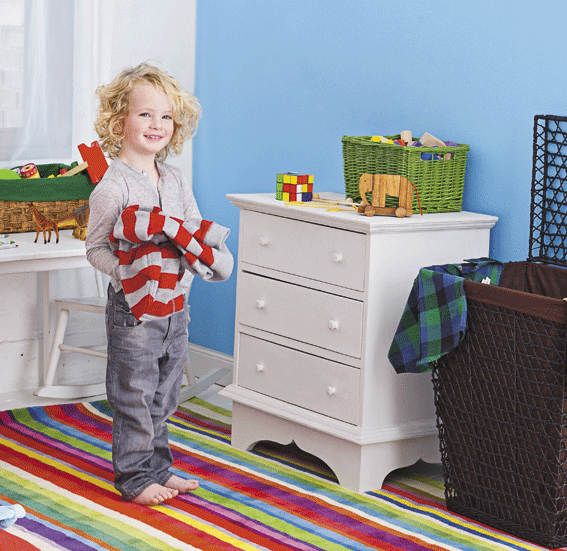 |
Want a more confident, well-behaved, and self-sufficient child? Start by teaching him the basics—how to use a fork, dress himself, put his toys away, and other everyday tasks.
By Hagar Scher
Photographs: Alexandra Rowley
Cleanup
Pick Up Clothes
Even a 2-year-old can learn to gather up his dirty duds.
Get him his own hamper. Buy one that’s not too tall, so he can easily reach the top. Place the bin in his bedroom to serve as a visual clue when he undresses.
Play a game. Tell him to smush his clothes into a ball and toss them into the “basket.” If he doesn’t make it the first time, guide him to try (try, try) again.
Sing a song. This reinforces the daily routine. Daniela Vancurova, assistant director of Brooklyn Free Space Preschool, came up with this one that’s sung to the tune of “Take Me Out to the Ball Game!” (as a bonus, it includes the word “stinky,” guaranteeing it will be a hit): “Throw us down in the hamper, Throw us down in the bin. We’ve been at school and play all day,
Now it’s time to clean dirt away. We feel stinky and dirty, Please, take us off right now. And go one, two, three to the hamper And push us down!”
Make It Easy: Get two hampers—one for whites, one for colors—so you won’t have to sort and he’ll learn his colors.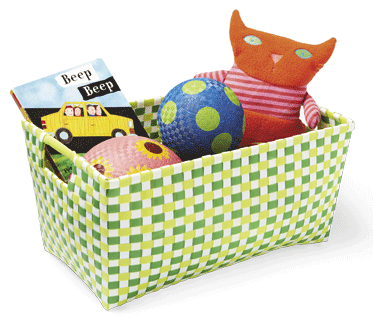
Straighten the Bed
Have realistic expectations: Your child may not be able to do a perfect job until she’s in first grade, at the earliest.
Tell her it’s her morning chore. Ask her to cover the bed with the blanket “so the bed won’t be lonely” and pull the blanket up to the pillow “so the pillow won’t be lonely.”
Teach her some techniques. Show her how to smooth out the bumpy parts to make the blanket flat, and how to fluff up the pillow.
Help her arrange her stuffed animals. Ask her to place them together in one corner of the bed.
Do the finishing touch. Demonstrate how to line up the pillow with the headboard so it’s straight.
Make It Easy: Skip a top sheet and use a blanket that’s light enough for her to lift and shake.
Create kid-accessible storage. Use baskets, under-bed boxes, chests, or shelves that your child can easily reach on his own, says Parents advisor Michele Borba, Ed.D., author of The Big Book of Parenting Solutions.
Don’t let him sneak away. When he wants to move on to the next activity, repeat the mantra: “We play, then we clean up.” Resist the urge to tidy up yourself.
As always, think fun. Sing a cleanup song or give him mini challenges like “First, put away all the red toys.”
Eating
Use a Spoon
Let go of any neat-freak tendencies and mealtime will be less stressful.
Hold on. As soon as you introduce solids around 6 months, give your baby her own spoon so that she gets used to holding it while you feed her. 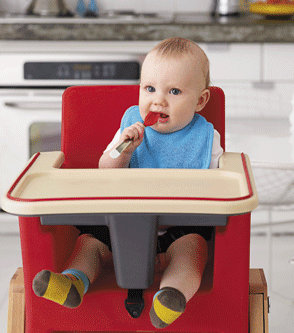
Start slowly. Put a small amount of her favorite food on the spoon, and then bring her hand to her mouth. She should be fairly adept at shoveling food into her mouth by the time she’s 1½.
Encourage independence. Let her experiment a little with “feeding” herself at each meal. “A spoon can be part toy, part utensil, so let her practice ‘playing’ with it to build her motor skills and autonomy,” says pediatrician Tanya Remer Altmann, M.D., author of Mommy Calls. It’s okay if most of the food doesn’t end up in her mouth at first.
Make It Easy: Use two spoons when feeding, one for you and one for her, or meals could take an eternity.
Eat With a Fork
Your kid should use utensils all the time by age 5.
Buy an age-appropriate fork. Have him use one with three tongs and a soft, easy-to-grasp handle—and show him how to hold it.
Start with easy-to-spear food. Give him a plate (preferably with high sides) with potato wedges or rounds of cooked carrot.
Dig in together. “It’s helpful to begin with a hands-on approach, holding the fork with him and guiding him as he stabs each piece of food,” says Dr. Remer Altmann.
Back off. After a while, let him feed himself and just offer assistance when needed.
Make It Easy: Sit with your child while he eats, not only to model good mealtime habits, but also to minimize his momentary fits of frustration.
Dressing
Pull On Pants
Let go of any neat-freak tendencies and mealtime will be less stressful.
Lay them down. Have him sit on the floor and put his pants in front of him.
Lift the right pant leg. Touch his foot and say, “Put this foot here and push it through until it comes out the tunnel.” Do the same for the left.
Stand up. Tell him to hold the top of his pants. Initially, you can help him stand, but show him how to hold on to the wall or bed to hoist himself up. Do a hip-swiveling dance with him, saying “Wiggle, wiggle, wiggle those pants all the way up!”
Line up the snap. Then tell him to push it together. After you start
the zipper, have him finish.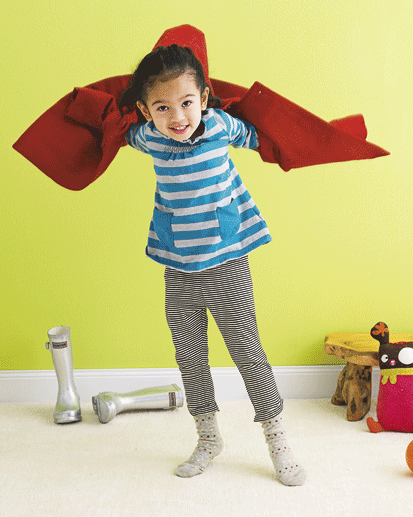
Make It Easy: Dress your
kid in pants with an elastic waist—this will help him be more independent and also simplify potty training.
Put On a Coat
The classic “Dip ’n’ Flip” technique
is the easiest (and most fun) way for
a child to get her jacket on.
Spread it out. Place your child’s unzipped coat on its back on the floor, upside down, so that the collar or
hood is pointing toward her feet.
Bend down. Show her how to crouch like a frog and put her hands in the armholes.
Flip it over. Tell her, “When I say ‘go,’
flip the coat over your head like it’s a bird flying through the air. Ready, set, go!” When she lifts her arms up high,
the sleeves will naturally slip down
over them, and her jacket will be on.
Get the zipper started. Then stand back and tell her to finish pulling it up so she gets used to the way it works.
Hygiene
Brush Her Teeth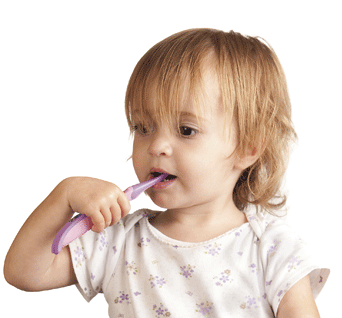
You should take a turn brushing every time until your child is in first grade.
Hand her a brush. Initially, get her used to holding a toothbrush without paste. It’s okay if she just sucks on it while she figures out where it goes.
Go for a ride. When she’s about 2, start using the train game, suggests Dr. Borba. “Say, ‘Your teeth are the train tracks, and the brush is the train. Move the train all along both tracks, the top and bottom.’ ” Get silly—make “Woo-woo!” and “Toot-toot!” sounds. Regularly place your hand on hers to guide her as she brushes.
Practice some counting. When she’s learning her numbers, count to five while you brush her lower teeth, then have her brush them while you count. Alternate four more times, then repeat on the top teeth.
Make It Easy: Eventually, you should place an egg timer next to the sink, set it for two minutes, and have her brush until it runs out.